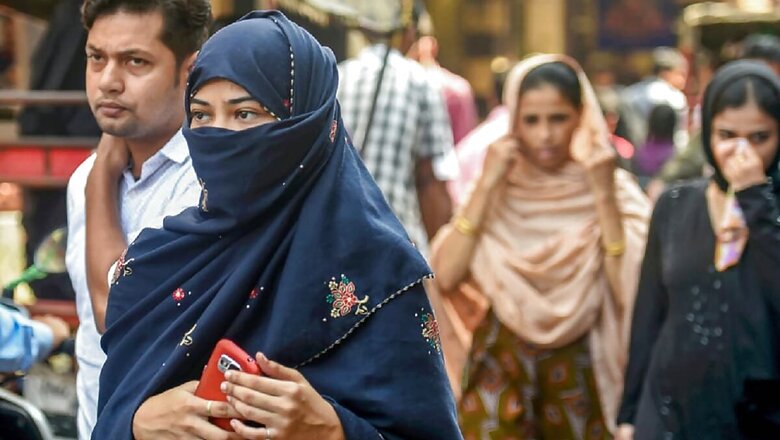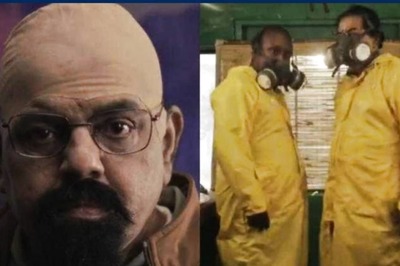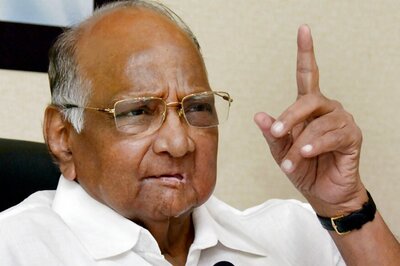
views
Jammu & Kashmir is India’s Muslim-majority administrative unit. While Muslims constitute over 95% of the population of Kashmir valley, they are a substantial minority in the Jammu region, constituting nearly 40% of the total population of Jammu region, including an overwhelming majority in Pir Panchal and near majority in Chenab valley of Jammu region. Yet interestingly, the so-called “Muslim” leadership across Jammu and Kashmir valley remains suffocatingly in the hands of upper caste Kashmiri, Dogri and Pahari Muslims. The only exception is the nomadic tribal community of Gujjar and Bakarwals, a Scheduled Tribe community and the only Pasmanda Muslim community of J&K that which can claim some degree of political empowerment, though even that is not exactly proportional to their population in the Union territory.
The reason why I wish to raise this question in the context of Jammu & Kashmir is because of the growing social assertion of Pasmanda Muslim community in north India, which is now challenging the dominance of upper caste Muslims in the political setup of Indian polity and demanding their fair political representation that matches their strong numerical majority of nearly 85% of the total population of Muslims in India, much more than even (estimated) 75% of Hindu Dalits, OBCs and Adivasis that form the total Hindu population of India.
To begin with, let us first understand the concept of ‘caste’ as opposed to ‘class’ in the context of Muslim society of Kashmir valley as well as rest of India. While theologically Islam is an egalitarian faith that teaches equality and there is no concept of “caste” in Islam, the social evil of casteism however found its way among Muslim converts of both Kashmir valley and rest of India, despite the promise of early Muslim Sufi missionaries of Islam being a casteless social way of life.
The caste system among Muslims of South Asia does not strictly adhere to Hindu Brahminical ‘Varna system’, but instead there are hundreds of ‘biradaris’, which are equivalent of Hindu ‘jatis’. The Muslim ‘biradaris’ in India, Pakistan and Bangladesh are loosely organised under three-fold classification. At the top are, what is known as ‘Ashrafs’ or upper caste Muslims that claim descendance from Arab and Central Asian Muslims immigrants. This category also includes Muslim converts from upper caste Hindus like Rajputs and Kshatriyas. The second category comprises ‘Ajlaf’ Muslims or those who have converted from occupational Shudra Hindu castes like weavers, tailors, washermen etc. In modern times, they are also described as OBC under the Constitution of India. The last category at the bottom of the pyramid are those Muslims, who have converted from Dalit Hindus, which are categorised under ‘Arzal’ Muslims or Scheduled Castes. Then there are Muslim tribal and nomadic communities as well, who are also placed at the bottom of this unofficial caste system among Muslims of South Asia.
The caste system among Muslims of J&K roughly follows this pattern, where Syeds and Pirs are at top, followed by occupational castes like Wani, Khandey, Lone etc., and then Shudra castes like Chopan, Hajjam, Hani and so on. At the bottom lie Kashmiri Muslim Dalits called ‘Wattals’, a community historically engaged in manual scavenging.
Pasmanda Muslim activists of north India point to near absence of their community not only from Muslim social and cultural organisations like All India Muslim Personal Law Board, but also from state-funded minority institutions like Aligarh Muslim University and Jamia Milia Islamia, both of which they point are staffed exclusively by upper caste Ashrafi Muslims from Syed, Pathan and Mughal ‘biradaris’. The situation is incidentally not any different in J&K either, whether nearly all Muslim religious charitable, social organizations are under the hegemoneous control of upper caste Kashmiri & Dogri/Pahari Muslims.
Pasmanda Muslim activists additionally point at their woeful low representation in the political set up of Indian polity, which has remained in dominating stranglehold of upper caste Ashrafi Muslims, who are not more than 15% of Indian Muslim population. Khalid Anis Ansari, a Pasmanda intellectual, in his writing points that out of 400 Muslims, who were elected to the Lok Sabha from first Lok Sabha till 14th Lok Sabha, a staggering 340 were from upper Ashraf Muslim castes and only 60 members were from Pasmanda Muslim community, which means an 11% population of Indian Pasmanda Muslim population had only 0.8% representation in the Lok Sabha for nearly seven decades. For Jammu & Kashmir, there would be perhaps no member ever from Pasmanda Muslim community in the Lok Sabha, even though Gujjar and Bakarwal community had few representatives in the Assembly or erstwhile J&K state. This is a highly shameful record for our state that claims to have an overwhelming Muslim majority status.
Pasmanda Muslim activism has come of age in north and western India in parallel to growing Dalit and Hindu OBC social, cultural and political assertion and accordingly many Pasmanda Muslim-focused social organisations have come up in different parts of India, including All India Backward Muslim Morcha of Dr Ejaz Ali, All India Pasmanda Mahaz of Ali Anwar from Bihar and All India Muslim OBC Organisation of Shabbir Ansari from Maharashtra. The Pasmanda movement in the rest of India has taken inspiration from movement of reformation and political assertion by Dalit and OBC icons like Jyotiba Phule, Periyar, Baba Sahab Ambedkar, BP Mandal, Kanshi Ram, Mayawati, Mulayam Singh Yadav and Lalu Yadav.
While there is still no political organisation solely driven by Pasmanda Muslim leadership in any state of India and most of the demands for political assertation are right now focused on giving more political representation to Pasmanda Muslim castes within existing political party set up, a Pasmanda Muslim-focused political party may also come up in future in states like UP & Bihar, where Pasmanda Muslim activism is very high. This is bound to create a ripple effect in Jammu & Kashmir as well, even as younger generations of Pasmanda caste Kashmiri and Dogri Muslims observe growing Pasmanda Muslim movement in rest of India and are also becoming an active participant of issues pertaining to emancipation of the community. I am sure that time is not far, when both Kashmir valley and Jammu regions will also see a parallel rise of political class from region’s vast Pasmanda caste Muslim community.
Read all the Latest News, Breaking News and Coronavirus News here.



















Comments
0 comment